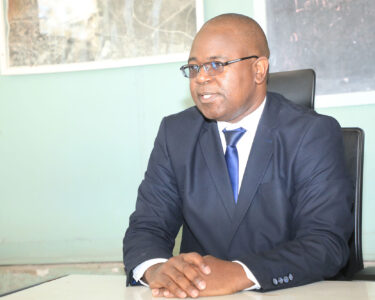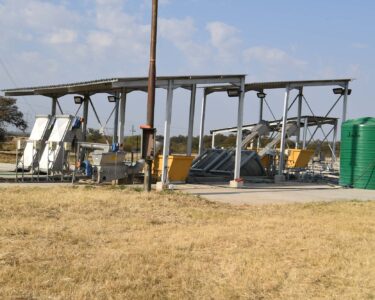There is something exciting happening at the United Bulawayo Hospitals (UBH), but one has to visit it to appreciate that government is serious when it talks about revamping the country’s health delivery system. Our Editor-in-Chief Munyaradzi Huni recently paid a visit to UBH where he came across a down-to-earth doctor, got a glimpse of one of the country’s best laboratories and heard the heart-rending story about obstetrics fistula. UBH will never be the same again! Read on . . .
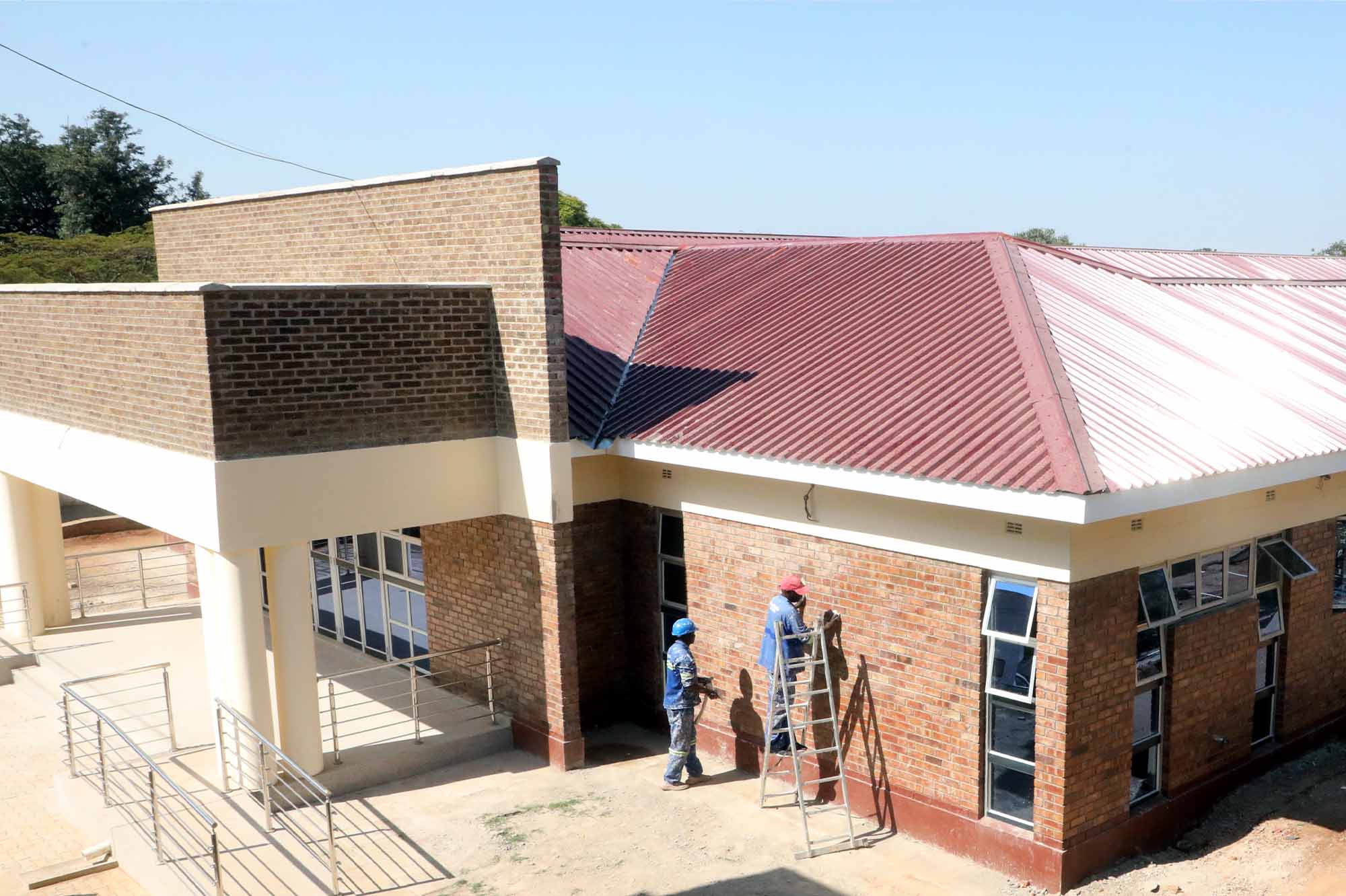
When the Secretary for Provincial Affairs and Devolution for Bulawayo Province, Paul Nyoni, insisted that the Brick by Brick team could not leave Bulawayo without paying a courtesy call on the United Bulawayo Hospitals (UBH), I was caught between a rock and a hard place. I have always had mixed feelings about hospitals. For one, people go to hospital to seek treatment, while others go there to die. In fact, I have always had a love-hate relationship with hospitals to the extent my mother is forever reminding me of an incident when I bolted out a hospital when the nurse wanted to administer one of those “dreaded” injections.
Meet Dr Busumani, the down-to-earth doctor
On arrival at the UBH, we were directed to office of the chief medical officer, Dr William Busumani, only to be greeted by a large desk and an empty chair. It took a few frantic calls by his secretary before our host finally showed up. Until then, I couldn’t help wondering what kind of a man our host was. You see, growing up, I had this impression that doctors were self-centred people who inhabited their own little world dominated by white dustcoats, syringes and stethoscopes. Above all, I saw them as “automatons” who shoved a thermometer into your mouth, recorded your temperature before hurriedly scribbling out a prescription in the most hideous writing . . .
These were the images that flashed through my mind as I waited for Dr Busumani. I know, too, that doctors work strictly by appointment. So why was he taking his sweet time to meet us, I wondered? After all, time is money. The answer was not long in coming: Dr Busumani was going to meet the Brick by Brick team at the newly-built UBH laboratory.
After the customary introductions, Dr Busumani took us on a tour of the laboratory, which lasted about 45 minutes. During the tour, Dr Busumani’s temperament and cool demeanour was proof, if any was needed, that I was wrong all along to view all doctors as high-flying intellectuals with large chips on their shoulders, who only saw people outside their immediate circles as “patients”. Our host was different; he was clearly one of us.
The laboratory that will change the game at UBH
And so the tour began.
Over to Dr Busumani: “The UBH laboratory, which has nine departments, is the first of its kind in Zimbabwe. We will be carrying out blood tests, tissue histology assessments as well as micro-biology. There is also an ICT department which will enable us to capture all the data in electronic form.
“Apart from offices, there are also call rooms for the doctors which will make it possible for the laboratory to operate 24/7. We want to avoid a situation where a patient brings his/her blood sample here and there are no doctors to analyse it.
“We obviously want the doctors on duty to feel at home. So, the call rooms are equipped with bathrooms with shower cubicles and a team room, among other mod-cons. These are minimum the international standards we have implemented to create a conducive working environment for our doctors.
“The above ancillaries notwithstanding, this is a high-level laboratory, certainly one of the best facilities on the African continent. The only other country where you will find a laboratory like this one is South Africa. Given its high level of sophistication and chemical resistant flooring, there is no reason why highly infectious diseases like Ebola cannot be investigated and managed here.
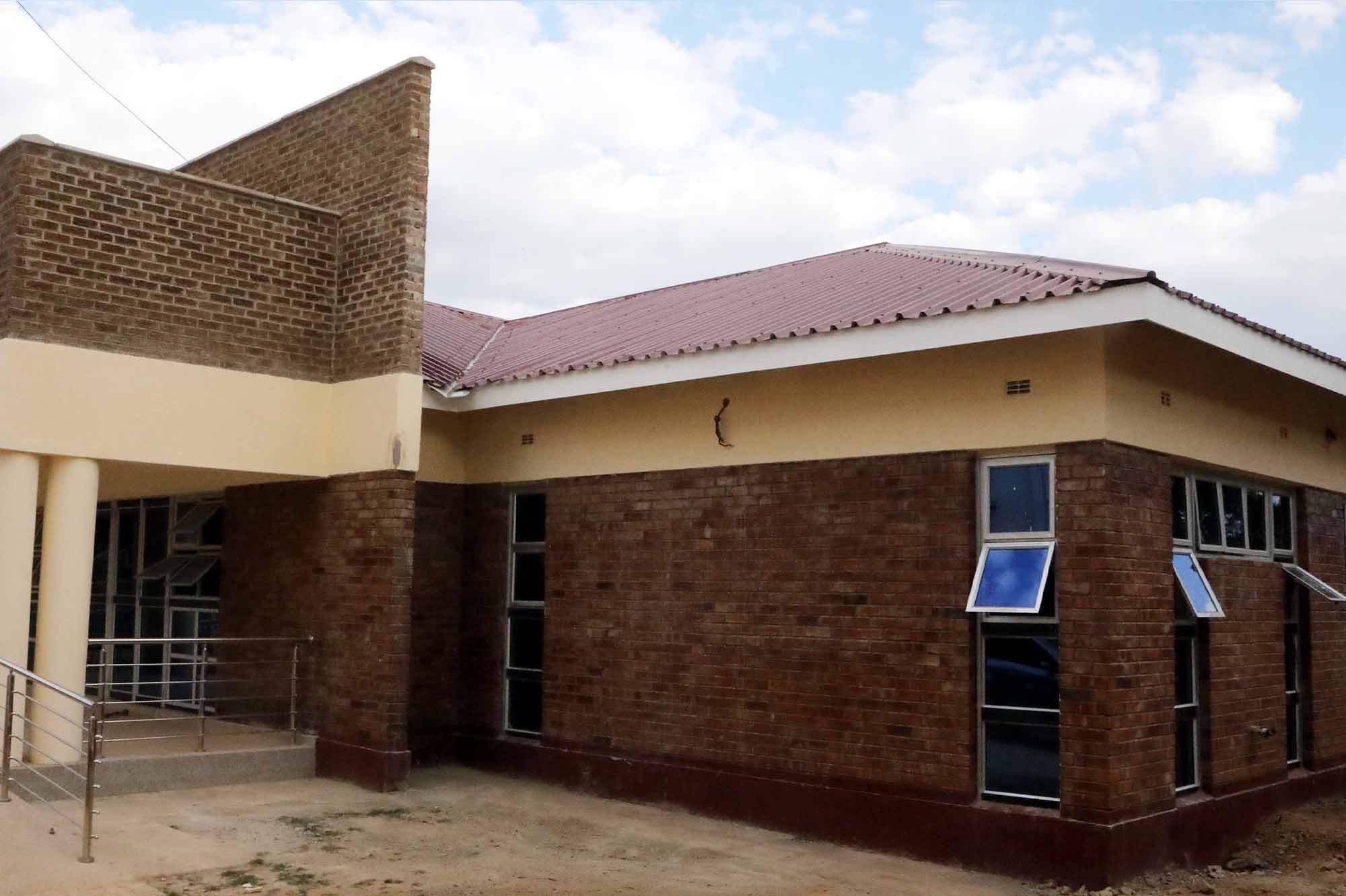
“The roof, too, is built in a such a way that nothing escapes from the laboratory. If you are not careful with viruses like Ebola, it can easily infect the staff as well as hospital patients. To cut a long story short, the UBH laboratory was built in such a way that we should be able to contain highly contagious conditions.
“Construction is 95% complete. The contractors are putting the final touches while Zesa is working on the electricity connections. The water supply and sewage infrastructure are already done.
“We are currently waiting for the delivery of the laboratory equipment which is in a warehouse in Harare. The equipment is quite delicate, so we will only have it delivered once the construction works are 100% complete. I would like to thank the government for funding the purchase of the state-of-the-art laboratory equipment.
“The construction of this laboratory brings us great joy. It’s good news for both the doctors and patients alike. The new UBH laboratory is a far cry from the small one we are currently using because it is more spacious and airy. As you can see, the reception area is quite big to facilitate efficient air circulation. We don’t want our patients to come here complaining of, say, a running tummy and going back home with TB.
“I strongly believe that a pleasant working environment is a great motivator. As doctors, we want to be able to work in a conducive environment to save lives. Remuneration comes second.
“We want to bring relief not only to the people of Bulawayo but beyond, who are forced to fork out a fortune each time they visit private hospitals and/or laboratories. In terms of its standards, UBH is going to be a government-owned private hospital, so to speak. In other words, what patients will experience here will be something that even the best in the private sector will be hard-pressed to match. This laboratory is going to put Zimbabwe on the regional map and it’s a landmark achievement for UBH.
“I would like to express my heartfelt thanks to the government for funding the construction of this laboratory and the purchase of the very latest equipment,” said Dr Busumani, as he proceeded to show us the rooms of the consultant pathologist, consultant hematologist, the microbiology; histopathology and immunology laboratories, the serology room, the bleeding and autoclaving rooms.
“Our last stop was the gross room, which Dr Busumani described casually as “where we cut your hand or your leg to find out the root cause of your illness. Here, we can cut any part of your body into pieces to help us in the diagnosis of your problem.”
“You mean cutting the leg or hand in real terms,” I asked. “Yes, we cut up people here. No wonder, some people actually refer to it as the cut-up room. We do cut up your hand or leg. That is the only way to find out the real cause of your illness if there is something wrong with either of them. Yes, sure we cut people here,” Dr Busumani responded.
Well, this writer never thought there was a more polite way of describing what happens in the gross room, but Dr Busumani insisted that is where “we cut up people.” We laughed and moved on.
The UBH laboratory is being built by a local company, Crowly Construction, and is expected to go a long way in modernising and revamping the country’s health delivery system. The world over, medical laboratories play an important role by helping experts to ascertain ailments afflicting patients before prescribing the necessary remedies. Once the laboratory is up and running, UBH will never be the same again.
Obstetrics fistula . . . A tale of blood and gore
From the laboratory, Dr Busumani took us to the fistula building, which is situated just a few metres from the hospital entrance. Unfortunately, Brick by Brick magazine team could not enter the building since an operation was underway, Dr Busumani told us. So, we had to contend with a verbal account of what really goes on behind its closed doors. And, let the reader be warned: It’s not for the faint-hearted.
Explained Dr Busumani: “Here, we conduct what are called obstetrics fistula operations. These cases are due to obstruction in the birth canal or simply because the baby cannot be delivered normally for one reason or another. The baby gets stuck inside the womb or birth canal and takes ages for the baby to be delivered. From a medical point of view, when labour pains start (slowly at first and increasing in intensity over time), we expect a mother to give birth within 24 hours.
“However, there are situations where the labour pains start, but the baby cannot make its way out through the birth canal. This can happen for a combination of reasons, like the mother is slightly built or the baby weighs above normal, say, 4 or 4,5 kg. In such cases, the opening on the vagina is too narrow to allow the baby to come out on its own. This usually happens with teen mothers, whose bodies are not mature enough for them to deliver the normal way. Yes, they can carry the baby successfully for nine months, but the challenges comes at the time of expected delivery.
“When labour pains start and the teenager tries to push the baby out, it gets stuck because the ‘passenger’ is bigger than the passage. However, when the baby gets stuck, we don’t expect this to last for more than 24 hours.
“Under normal circumstances, Normally, the baby should emerge once the cervix is 10 cm, after which we give the baby an hour to emerge into the world. However, if the baby is still stuck after an hour even when the cervix is 10 cm, it means there are going to be problems. In practice, if the baby is stuck beyond an hour, its head starts exerting pressure on the mother’s pelvic bones. Under such pressure, the flesh around the vagina starts to die. When this happens, the mother is transferred from the labour ward to here so that we can perform what we call obstructed labour. Obstruction can happen when it takes about five hours, for an expecting mother in, say, Beitbridge to get here.
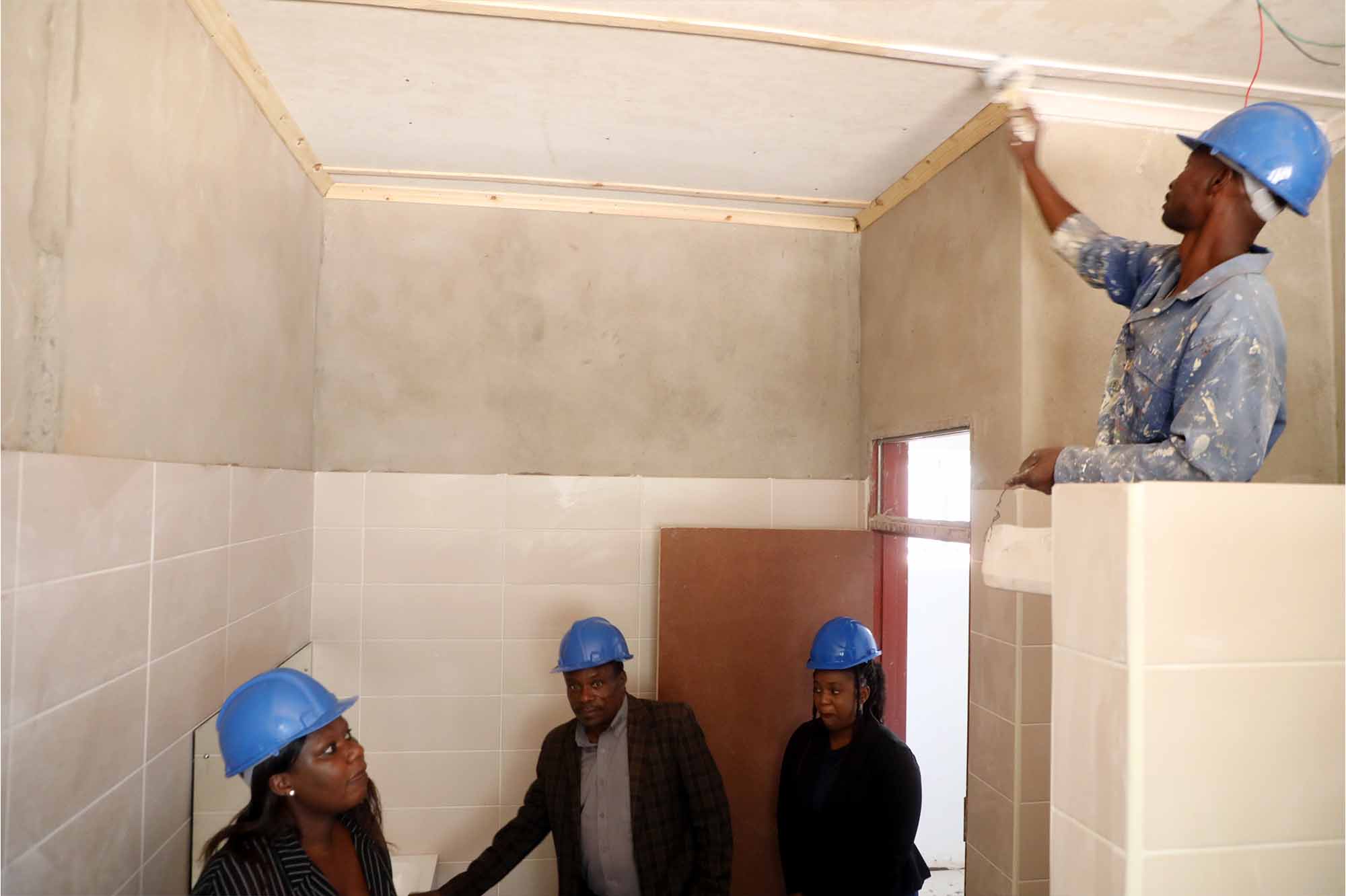
“Picture the situation: A would-be mother’s cervix is at 10 cm and the baby’s head is stuck. It’s putting pressure on the tissues in-between the baby’s head and the mother’s bones. Can you imagine five hours travelling from Beitbridge up to Bulawayo in that condition? By the time she gets here, the flesh is as good as dead. In most cases, the baby will also be dead and we have no option but to do a Caesarian section to deliver the stillborn baby.
“But even if the baby is alive, the damage is already done. There has been sustained pressure between the baby’s head and the tissues around the mother’s vagina for five hours. This means the tissues are already dead, since one hour is the maximum from a medical perspective.
“Five hours is too long. Both mother and baby may survive the ordeal. But like I said, in most cases, the baby will be stillborn. When the mother starts healing, those dead tissues start to peel off. In most cases, the organs that come under the most pressure are the bladder and the rectum.
“The bladder starts to slough off at least two weeks after the Caesarian op, and the unfortunate woman falls victim to a phenomenon called “leaking urine” due to the abnormal opening on the bladder. The urine leaks continuously through the vagina, and it is smoothing beyond her control..
Under normal conditions, a woman is in a position to ‘hold’ the urge to pee until she gets to the nearest toilet. But when a woman has this abnormal opening between the bladder and the vagina, urine has a tendency of flowing non-stop.
What does that mean? Urine smells; and so this means the unfortunate woman reeks of urine all the time, day and night. This creates social problems for her. There are stories of husbands dumping their wives for leaking urine and making life uncomfortable for them.

“As I have previously mentioned, this condition mostly affects teenage mothers, young girls in the prime of their lives. This can destroy the girl’s life because it can go on for 20 or more years. A woman suffering from this condition will become a social outcast and she’s unlikely to ever get married,” Dr Busumani explained.
But there is more to obstetrics fistula, the good doctor elaborated.
“If the rectum is damaged, it’s means faeces coming out continuously through the vagina. This is real nightmare because it’s hard to control defacation. The faeces will continue to find their way out through the vagina anywhere, anytime, even during meal times.
“There are such girls and women in our communities going through such suffering. They often come here for help, and we have operated on several such patients here. The demand for our services in such cases is quite overwhelming, there is now a backlog. Every month, we attend to about two or three such patients, mostly teenagers, who are at the greatest risk, as previously mentioned.
“The tragedy is that it’s not just the Bulawayo teens who are coming here. Some are from as far as Plumtree, Beitbridge, Gwanda, Tsholotsho, etc, I can say about 30% of mothers who come to UBH for antenatal care are teenagers. That is how bad the situation is.
“The repair work is quite complicated and it can take as long as five hours. There are no shortcuts whatsoever, and we cannot afford to leave anything to chance.
“The fistula building, which has two theatres and a recovery ward, is the product of a partnership between the government and the United Nations Population Fund (UNPF).”
Quite a heart-rending story! Scary actually!
‘Fistula is a disease for the poor’
Since fistula obstetrics is commonly associated with teen mothers, what was the best way of tackling it, I asked Dr Busumani.
His response: “Teenagers will always get pregnant because when teenagers fall in love, the whole body falls in love. My advice to pregnant teens is to avoid going into labour at all costs. For any pregnant teenager, the best form of delivery is Caesarian section, and the earlier it is done the better.
“Unfortunately, fistula is a disease for the poor because if you have the money, you can simply rush your pregnant daughter to the nearest hospital. But if you are poor, it can take you five or even more hours to get your pregnant teen to the hospital. The poor girl goes through five hours of excruciating pain and by the time you get to the hospital, it’s probably too late.
“As the sexual and reproductive officer for UBH, my role is to create awareness about life-threatening and debilitating conditions such as fistula. It’s unfortunate that we cannot stop teenagers from getting pregnant. In some Matabeleland districts, teenage pregnancies are actually encouraged. Thus, a girl aged between 12 and 15 years, is expected to have a husband. According to the laws of the country, it is an offence to bed a minor, but in parts of Matabeleland, under-age marriages have the backing of the traditional leaders. So, I don’t see this problem [teenage pregnancies and fistula] going away any time soon.
“The good thing, however, is that the fistula operations are now being performed by local doctors,” said Dr Busumani, himself a qualified specialist gynaecologist, who couldn’t resist one last parting shot:
“Like I said, fistula is now a standard procedure for us at UBH. It’s just like a burst pipe. All you need to do is locate where it is leaking.”
Our tour of the UBH lasted the better part of three hours. And I must say it went a long way in changing my childhood idea of doctors and hospitals. The bone-chilling account of the nightmare called fistula was, no doubt, an eye-opener even though Brick by Brick sub-editor Simon Ngena was against the publication of some of the finer details. My heartfelt thanks go to UBH, in general, and Dr Busumani, in particular for giving me a useful insight into the Hippocratic Oath.




